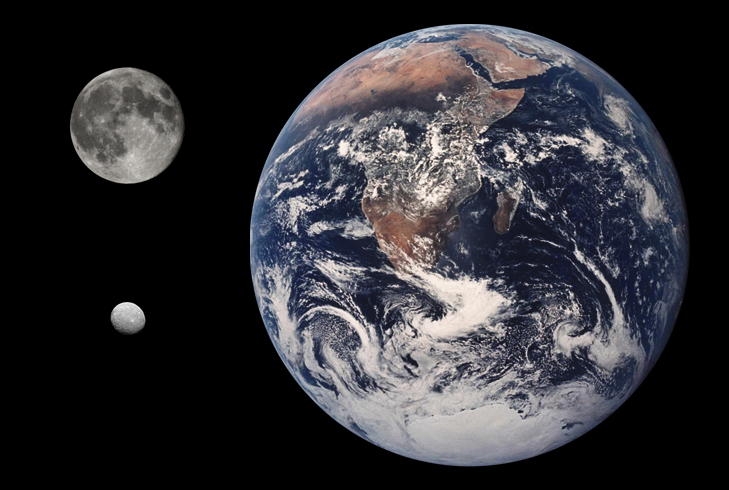 |
| The Main Asteroid Belt shown in White |
The main asteroid belt lies between Mars and Jupiter. It consists of asteroids from a few centimetres in diameter to the size of a dwarf planet.
Due to strong gravitational forces, it is impossible for a planet or large protoplanet to survive between Mars and Jupiter without being ripped apart. So the asteroid belt might be the remains of a planet which has been ripped apart.
Discovery of the First Asteroid
Many calculations were done in the early 18th century to calculate the number of asteroids and accurate answers were found. However, actually seeing the asteroids was a more difficult problem, and it took until 1st January, 1801 for Guiseppe Piazzi to find the first one. He wrote in his diary"The light was a little faint, and of the colour of Jupiter, but similar to many others which generally are reckoned of the eighth magnitude. Therefore I had no doubt of its being any other than a fixed star. In the evening of the second I repeated my observations, and having found that it did not correspond either in time or in distance from the zenith with the former observation, I began to entertain some doubts of its accuracy. I conceived afterwards a great suspicion that it might be a new star. The evening of the third, my suspicion was converted into certainty, being assured it was not a fixed star. Nevertheless before I made it known, I waited till the evening of the fourth, when I had the satisfaction to see it had moved at the same rate as on the preceding days."and in a letter to astronomer Barnaba Oriani of Milan he made his suspicions known in writing:
"I have announced this star as a comet, but since it is not accompanied by any nebulosity and, further, since its movement is so slow and rather uniform, it has occurred to me several times that it might be something better than a comet. But I have been careful not to advance this supposition to the public."Piazzi called his discovery Ceres, and for 50 years it was known as the 8th planet in the Solar System. It is the largest of the asteroids and is now classified as a dwarf planet. It is the only dwarf planet in the asteroid belt. Its diameter is about 950 km and contains 32% of the belt's total mass.
 | |||
| Ceres - taken by Hubble |
 |
| From Wikimedia Commons |
First Ten Asteroids Discovered
 |
| Sizes of the first ten Asteroids to be discovered compared to the Earth's Moon, all to scale. |
| Name | Size | Mass % of belt mass (x 1020 kg) | Discovery date |
Discoverer |
|---|---|---|---|---|
| 1 Ceres | 950 km diameter | 32% 9.43 ± 0.07 | 1st January, 1801 | Guiseppe Piazzi |
| 2 Pallas | 530-565km diameter | 7% 2.11 ± 0.26 | 28th March, 1802 | Heinrich Olbers |
| 3 Juno | 320×267×200 km | 1% 0.267 | 1st September, 1804 | Karl Ludwig Harding |
| 4 Vesta | 578×560×458 km | 9% 2.67 ± 0.02 | 29th March, 1807 | Heinrich Olbers |
| 5 Astraea | 167×123×82 km | 0.1% 0.029 | 8th December, 1845 | Karl Ludwig Hencke |
| 6 Hebe | 205×185×170 km | 0.4% 0.128 | 1st July, 1847 | Karl Ludwig Hencke |
| 7 Iris | 225×190×190 km | 0.4% 0.136 | 13th August, 1847 | John Russell Hind |
| 8 Flora | 136×136×113 km | 0.1% 0.043 | 18th October, 1847 | John Russell Hind |
| 9 Metis | 235×195×140 km | 0.5% 0.147 ± 0.020 | 25th April, 1848 | Andrew Graham |
| 10 Hygiea | 500×385×350 km | 3% 0.885 | 12th April, 1849 | Annibale de Gasparis |
No comments:
Post a Comment